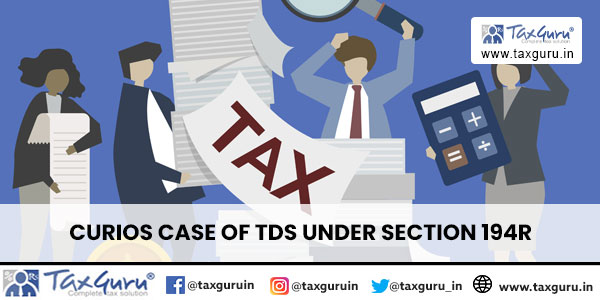Section 194R: TDS on Benefits and Perquisites
Pre-194R Era:
Before the era of Section 194R, businesses often adopted lenient practices regarding the classification and reporting of expenses. This way of classification was resulting in significant revenue leakages for the tax authorities.
Issue
1. Benefits like tours, travel, and other perquisites were not properly categorized or taxed.
2. Industries like white goods often passed profits to dealers as post-sales discounts in form of Kind(Like tours & other Gifts), allowing one party to claim deductions while the receiving party did not report the corresponding income.
Post Introduction of Section 194R:
To address such issues, Section 194R was brought in for deduction of TDS on benefits or perquisites valued above ₹20,000 provided in a year. This ensured both proper tax deduction and reporting of income by the recipient.
Provision of Section 194R
TDS must be deducted at the rate of 10% on the value of such benefits or perquisites for value The section applies irrespective of whether the benefit is in cash or kind provided total Perq’s exceeds Rs 20,000 in Total.
Accounting Implications: The introduction of this section has reshaped accounting practices. Businesses providing perquisites now ensure they deduct TDS as it is mandated by law, thus compelling the recipients to account for same as taxable income.
2nd Order Effect
However because of not so proper clarifications by the department even after 2 years inconsistencies persist in the industry in the way Section 194R has been implemented
Issues in identification of Deductee
Ideally, TDS should be deducted in the name of the business entity receiving the perquisites. However, many businesses deduct TDS in the name of the individual (e.g., a partner or employee) representing the entity. For instance, if one partner of a firm avails a benefit during a business event, deducting TDS in the partner’s name creates accounting discrepancies.
The Assessee’s Dilemma:
The lack of uniformity and clarity from tax authorities has led to challenges for assessees. For example:
If TDS is deducted in the name of an employee or partner instead of the business entity, it may lead to disputes over income reporting and the subsequent tax liability. As Employees/partners may face undue taxation on benefits meant for the entity, causing difficulties in reconciling taxes paid with actual liabilities.
Accounting Entries:
Partner’s Account/Employee Expense Account Dr.
To Perquisites Account (Indirect Income)
Conclusion:
While Section 194R has effectively addressed significant revenue leakages and improved compliance, post addressing one issue it has introduced complexities for assesses for another issue, particularly regarding TDS deductions and income reporting.





